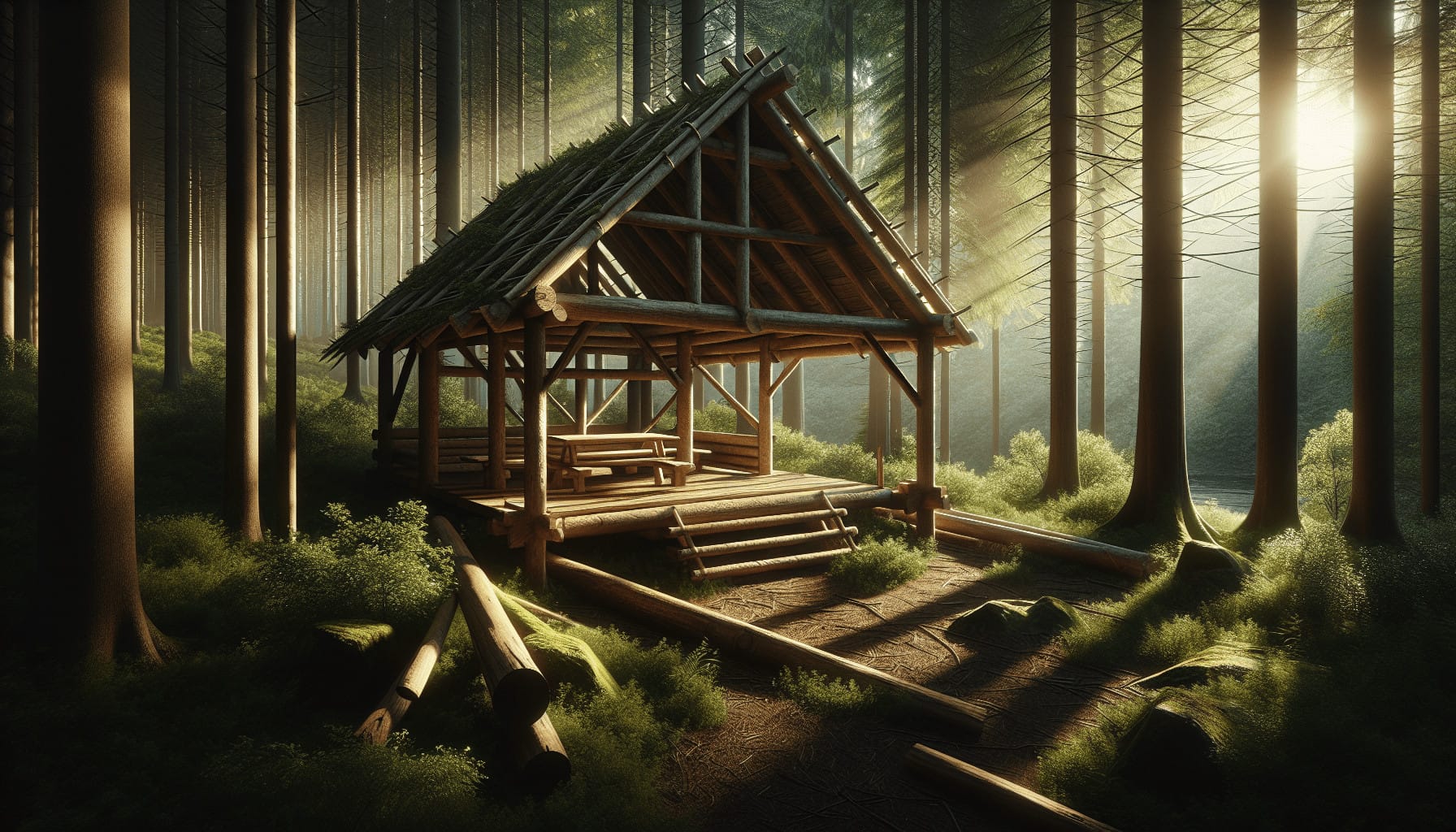Have you ever wondered what it takes to build a sturdy and reliable shelter in the wilderness? Whether you find yourself on a planned camping trip or an unexpected outdoor adventure, knowing how to construct a shelter that can withstand the elements is crucial. Understanding the structural integrity of wilderness shelters is not just a survival skill; it’s also about ensuring your safety and comfort no matter the situation.

Understanding the Basics of Wilderness Shelters
Building a shelter in the wild is more than just assembling a few sticks and leaves. It requires an understanding of the environment, materials available, and the structural principles that ensure safety and durability. The foundation of any good shelter begins with a well-thought-out plan that considers both the design and materials that nearby nature provides.
Why Structural Integrity Matters
Structural integrity is paramount when you’re relying on a shelter for protection. A well-constructed shelter can protect against harsh weather conditions such as rain, wind, and snow, while a poorly built one can lead to discomfort—or worse, danger. Being mindful of structural principles helps ensure the shelter can stand firm against the elements, offering you warmth and security.
Basic Materials for Wilderness Shelters
What materials are typically used in wilderness shelters? The choice largely depends on your surroundings, but you can often rely on wood, leaves, rocks, and other natural resources. These materials play a significant role in forming the foundation, walls, and roof of your temporary home. Choosing the right materials is crucial in achieving a balance between stability and comfort.
Types of Wilderness Shelters
Depending on your location and the resources at hand, different types of shelters can be constructed. Each design has its benefits and challenges, and knowing which to construct can simplify the process significantly.
Lean-To Shelter
The lean-to is one of the simplest and most effective designs. It typically consists of a single sloped roof that leans against a natural structure like a tree or a large rock. Constructing a lean-to requires minimal materials and provides basic protection against wind and rain. However, its open design means it’s not ideal for extremely cold conditions unless paired with additional insulation.
A-Frame Shelter
The A-frame offers a bit more coverage than the lean-to. With its triangular shape, it sheds rain and snow efficiently while providing a protected space inside. The A-frame design is stable, as both sides support each other and distribute weight downward evenly. You can enhance its effectiveness with insulating materials like leaves and branches.
Debris Hut
If you’re in an area with abundant leaves and branches, the debris hut is a suitable choice. This structure involves piling a thick layer of debris over a framework of sticks. The debris acts as natural insulation, making it effective in cooler climates. The success of this shelter hinges on the thickness and integrity of the debris layer, which helps in maintaining warmth inside.
Snow Shelter
Snow shelters or igloos can be lifesavers in winter conditions. Snow is a great insulator, and when packed tightly, it can create a solid and warm refuge. Building a snow shelter requires understanding snow density and the principles of igloo construction. Ventilation is also critical to ensure safety against carbon dioxide buildup.
Key Structural Principles for Shelter-Building
Embarking on building a shelter requires insight into some fundamental structural principles. These principles help ensure the durability and safety of your creation while making efficient use of available resources.
Stability and Balance
A stable structure distributes loads evenly and maintains its equilibrium even under stress. With careful alignment and load distribution, materials can withstand external forces such as wind and snow. Consider how to balance each component of your shelter to prevent collapse and ensure longevity.
Anchoring and Securing
Anchoring your shelter adequately to the ground is essential for maintaining structural integrity in adverse conditions. Use natural weights like rocks or additional tie-downs to secure essential parts like the shelter’s framework. Proper anchoring prevents your shelter from being lifted or swayed by wind.
Insulation and Ventilation
While structural integrity ensures the stability of your shelter, insulation provides comfort by retaining heat. Utilizing materials like leaves and snow can create natural warmth barriers. Ventilation, on the other hand, is crucial to prevent condensation and allow fresh air circulation, especially in enclosed designs like debris huts or snow shelters.
Environmental Considerations in Shelter Construction
The environment significantly influences how you construct your shelter. Understanding local weather patterns, terrain, and available materials can guide decisions that enhance your shelter’s effectiveness and sustainability.
Weather Patterns
The local weather dictates the type of shelter best suited for your needs. For instance, in a rainy environment, a shelter with a steep roof helps channel precipitation away. In windy areas, a low-profile design reduces wind resistance and increases structural stability.
Terrain and Landscapes
Select a location that naturally offers some protection against the elements, such as a spot away from prevailing winds or near natural windbreaks like boulders or dense forests. Avoid building in low-lying areas prone to flooding or spots with debris indicating past landslides.
Material Availability
Your surroundings determine which materials you can use. In wooded areas, branches and leaves are abundant resources, while in rocky terrains, stones become vital building blocks. Adapting to available materials not only facilitates construction but also lessens environmental impact.

Practical Steps in Building a Wilderness Shelter
When it comes to the actual process of constructing a shelter, a few practical steps ensure efficiency and effectiveness. Preparation is key, so having a mental blueprint and organization can smooth the process considerably.
Site Selection
Choosing the right location for your shelter is the first step. Think about safety from environmental hazards, proximity to resources like water, and natural protection available from pre-existing features. A well-chosen site sets the foundation for a successful shelter.
Assembling the Framework
Start by constructing a robust framework to support your shelter. For most designs, this involves creating a sturdy base with long branches. Ensure this framework is securely supported and anchored to prevent any vulnerability as you continue building.
Adding Walls and Roofing
Once you have a framework, the walls and roofing provide the necessary protection against environmental factors. For solid walls, layer materials such as branches and foliage, taking care to overlap them to prevent wind or rain from penetrating. The roofing should also be efficiently layered, with an eye on effective water runoff and weight distribution.
Final Touches and Improvements
Finally, assess your shelter’s structural integrity by checking for any weak points and making necessary reinforcement. Consider adding additional insulation, such as leaves or snow, to improve warmth. Always leave room for adjustments, as shelters may need frequent repairs or enhancements, depending on the weather and wear over time.
Testing and Maintaining Your Shelter
Building a shelter is not the end of your task; maintaining it is equally important. Regular checks for damage or wear help ensure its ongoing effectiveness. Testing and maintenance efforts are all about ensuring that your shelter remains a safe and reliable refuge.
Inspection and Repair
Regular inspections for structural damage—such as broken branches, water leakage, or weakened joints—will prolong your shelter’s life. Quick repairs, like securing a loose branch or patching holes with additional materials, help in maintaining its integrity.
Adaptation to Changing Conditions
As conditions evolve, so too might your shelter needs. This adaptability could involve modifying the structure with additional insulation during a cold snap or creating extra ventilation in warmer weather. Being responsive to changing conditions helps keep your shelter both comfortable and stable.
The Psychological Benefits of Building a Shelter
Constructing a shelter is not only practical but also offers a surprising mental boost. The process of creating something functional from natural materials can be incredibly satisfying and can serve as a significant confidence booster in wilderness scenarios.
Sense of Accomplishment
Building a shelter from scratch gives a sense of achievement that’s hard to match. Knowing you’ve created a safe space from what nature provides instills a valuable feeling of competence and self-reliance.
Connection with Nature
Engaging directly with your environment fosters a deeper connection with nature. Understanding the materials and landscapes you work with enriches your experience, opening your eyes to the nuances and beauty of the natural world around you.
Conclusion
Understanding the structural integrity of wilderness shelters equips you with the knowledge and confidence needed to face the wild. By mastering the principles of shelter construction and maintenance, you’re prepared to create a sanctuary in nature, protecting you from the elements and offering a sense of accomplishment and security. The skills you cultivate and the respect for nature you develop through shelter-building are invaluable, ensuring that you’re ready for whatever wilderness adventure lies ahead.
